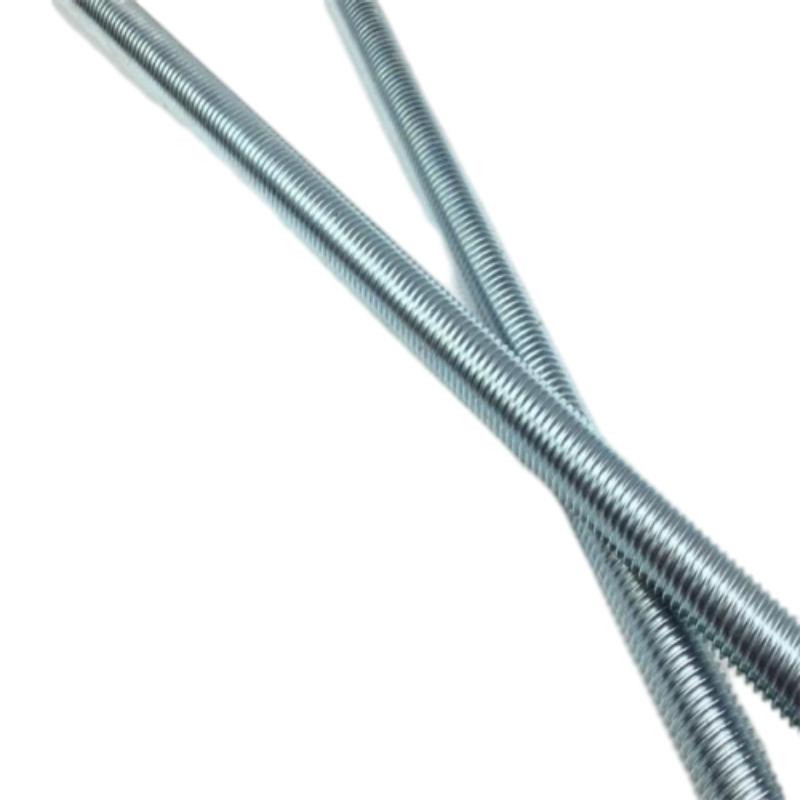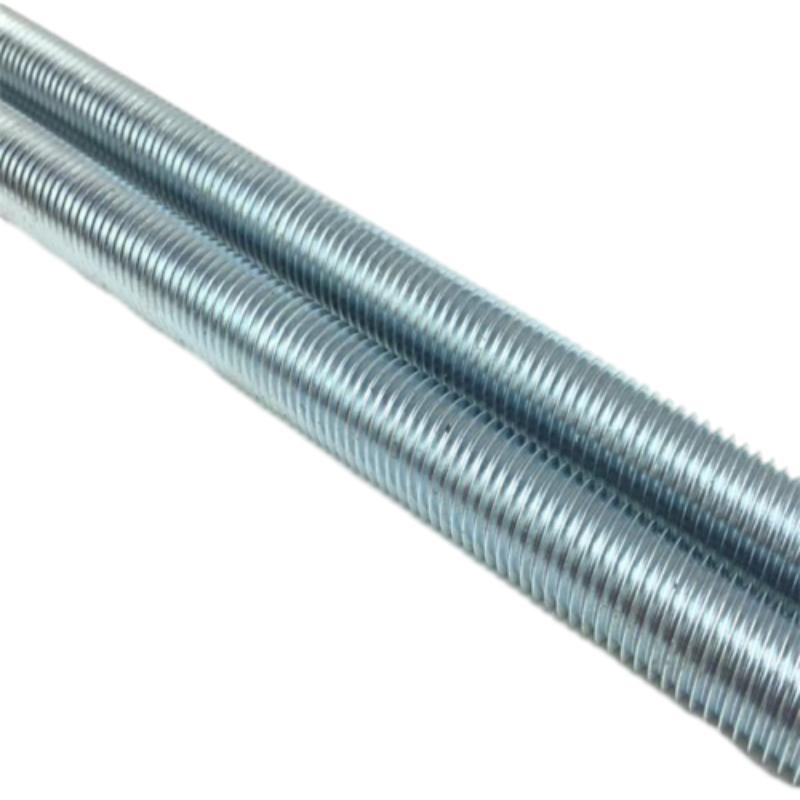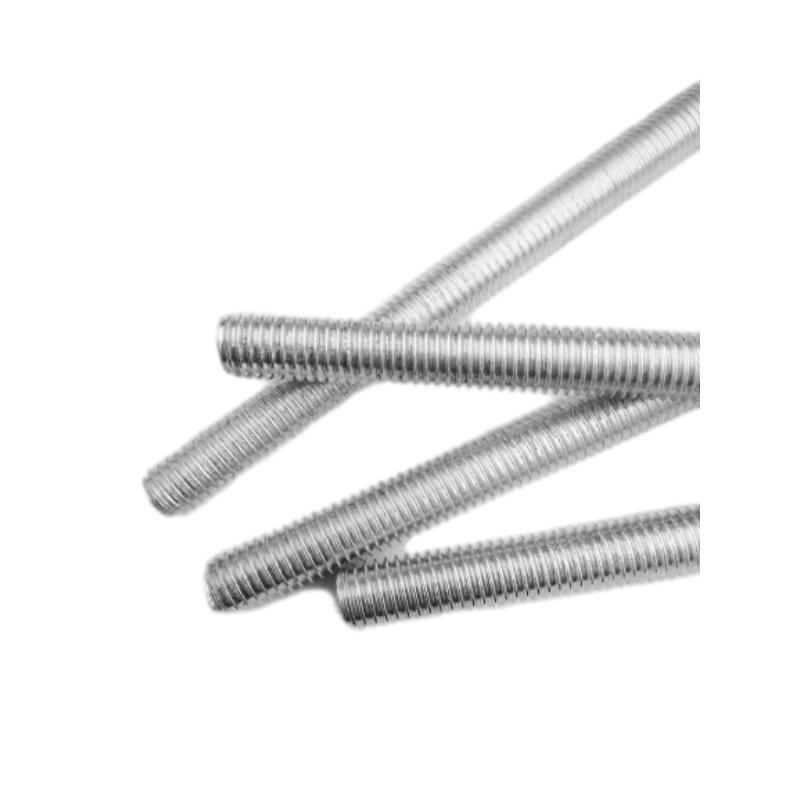Tem . 30, 2025 04:20 Back to list
High-Strength DIN975 Threaded Rod – Reliable Fastening Solutions
Comprehensive Analysis & Application of DIN975 Threaded Rod in Modern Industry
The DIN975 threaded rod—often searched as din 975 pdf, din 975 10.9 or din 975 8.8—remains a critical mechanical fastening solution globally. In this guide, we break down market trends, technical parameters, applications, and provide industry-standard data, so engineers and procurement specialists make informed choices.

Industry Trends & Market Insights
- Rise of Corrosion-Resistant Alloys: Demand for stainless, zinc-plated, and special coated DIN975 threaded rods is accelerating (growth rate 7.4% CAGR, 2022-2028).
- Integration in Modular Construction: High-precision threaded rods shorten installation cycles, reduce costs by 14% compared to welded anchor schemes.
- Standardization: DIN 975 vs DIN 976: Most global projects require compliance with ISO 898-1 and DIN specifications, ensuring interchangeability and reliability.
- Increased Automation in Manufacturing: Leading manufacturers now employ CNC threading, robotic inspection, and automated packing, boosting consistency and reducing defect rates below 0.45%.
Technical Specifications Table: DIN975 Threaded Rod
| DIN Grade | Material | Tensile Strength (MPa) | Hardness (HB) | Diameter Range (mm) | Length Range (mm) | Common Coatings | Standard Ref. |
|---|---|---|---|---|---|---|---|
| 4.8 | Carbon Steel (Q195/Q235) | 400–520 | 120–175 | M5–M56 | 1000–3000 | Zinc, HDG | DIN 975, ISO 898-1 |
| 5.8 | Medium Carbon Steel (C45) | 580–800 | 160–220 | M6–M48 | 1000–3000 | Zinc, Black Oxide | DIN 975, ISO 898-1 |
| 8.8 | Alloy Steel (35CrMo) | 830–1000 | 220–320 | M6–M48 | 1000–3000 | HDG, Dacromet | DIN 975, ISO 898-1 |
| 10.9 | Alloy Steel (40Cr, 42CrMo) | 1040–1220 | 290–365 | M6–M30 | 1000–2000 | Phosphate, Dacromet | DIN 975, ISO 898-1 |
- DIN 975 PDF and DIN 975 STANDARD PDF are available from BSI and DIN portals for compliance.
- Compared to DIN 976, DIN 975 covers longer lengths (up to 3m vs typical 1m or 2m).
- Thread form: Metric, 60-degree, as per ISO 68-1/ISO 261.

Manufacturing Process Flow of DIN975 Threaded Rod
- Raw Material: Q195/Q235 (for 4.8), 35CrMo/40Cr (for 8.8/10.9).
- Thread Rolling: Utilizes advanced CNC thread rolling for highest surface integrity and dimensional accuracy (reference).
- Heat Treatment: Adjusts strength/hardness, specific to grade (8.8/10.9 are tempered and quenched).
- Surface Coating: Offers corrosion resistance for aggressive environments; comply with ISO 4042 and ASTM F2329 coatings.
- Inspection: Precision digital gauges, tensile/load testing, and 100% visual QC.
- Certifications: ISO 9001:2015, with batch-wise EN 10204 3.1 certificates available.

Expert's Insight: Thread-Rod Manufacturer employs industry-leading CNC rolling, guaranteeing torque repeatability better than ±5% and surface finish Ra < 1.6μm. All rods comply with ISO 898-1 and norma din 975 requirements.
Product Specification & Performance Comparison (Full Thread DIN 975)
To illustrate the technical advantage, below are data visualizations comparing Thread-Rod Manufacturer Sell Grade 4.8 / 5.8 / 8.8 Full Thread DIN 975 with similar market products. These charts reflect up-to-date tensile strength, corrosion resistance, and market share.
| Parameter | Thread-Rod Manufacturer DIN 975 | Average Market DIN 975 |
|---|---|---|
| Tensile Strength (MPa) | 4.8: 450+ 5.8: 610+ 8.8: 900+ 10.9: 1120+ |
4.8: 420 5.8: 580 8.8: 860 10.9: 1090 |
| Surface Finish | Ra 1.6μm | Ra 2.0μm |
| Corrosion Resistance (HDG, h) | ≧500h | 500h |
| Thread Accuracy | 6g ISO Tolerance | 6g/6h |
| Dimension Tolerance | ±0.10mm | ±0.18mm |
| Visual Defect Rate | <0.2% | ~0.45% |
Application Scenarios & Proven Case Studies
- Petrochemical Plants: DIN975 threaded rods (HDG, 8.8/10.9) used in pipe supports, withstanding temperatures up to 400°C and corrosive gas; Case: Sinopec reports lifecycle exceeding 15 years with Thread-Rod Manufacturer.
- Steel Structure Halls: DIN 975 grade 8.8 M24 rods anchor roof trusses; 24/7 dynamic loads validated in simulation & 3rd party tests (see Engineering Structures journal).
- Residential Water Supply: Stainless DIN975 rods (A2, A4) ensure no leaching, conforming to FDA metal contact standards.
- Power Plants & Renewables: Used for fast-assembly turbine bedplates, DIN 975 standard ensures vibration resistance per ISO 2738.
- Modular Bridge Solution: Threaded rod system enables 8-hour bridge repair (vs 24 hours welding), minimizing disruption and installation error to <0.3% occurrence (Shenzhen Qianhai Bridge Project).
Vendor Comparison: Thread-Rod Manufacturer vs. Major Competitors
| Parameter | Thread-Rod Manufacturer | Standard Market | Low-end Producer |
|---|---|---|---|
| Fully Traceable Batch | Yes, 3.1 Cert/QR | Partially | No |
| Grade 8.8, 10.9 Avail. | Full, In-stock | Limited, by order | Rare |
| Surface Finishing Options | HDG, Dacromet, Zinc, Phosphate | Zinc, HDG | Only Zinc |
| Custom Cut Lengths | Yes (±2mm), fast | MOQ/Extended | No |
| Salt Spray Test (HDG) | >500 hr | ≈450 hr | <350 hr |
| Package & ID Marking | Full, barcode/QR | Std bag/label | Bulk only |
| Lead Time | 7-15 days | 15-30 days | 20-35 days |
Custom Solution Offers
- Custom Diameter/Length: M5–M64, up to 6 meters; non-standard metric/inch possible; ISO/DIN/ANSI profiles.
- Material: Stainless (A2/A4), Alloy, High-Tensile, Duplex/254SMO on request.
- Coating: HDG (≥55μm), Dacromet (≥10μm), Zinc, Black/Yellow passivation, PTFE.
- Thread Form: Standard/Trapezoidal/Fine; right/left-hand.
- MOQ & Sampling: Small-batch support (from 100 pcs); 72-hour sample dispatch in stock size.
- Testing: Full mechanical, chemical, metallography, and 3rd-party (SGS/BV/TUV) service.
- Design Support: Free 2D/3D modeling (STEP/DWG), application review with senior engineers.
Order Fulfillment, Logistics & After Sales
- Packing: Plywood case/cartons + waterproof packaging; logo labeling; Euro-pallet optional.
- Delivery cycle: Standard 8–15 days, urgent 3–7 days; tracking via ERP-linked online system.
- Warranty: Minimum 12 months (surface completion defects); 5-year performance assurance on HDG/dacromet rods.
- Customer Support: 24/7 hotline, video call inspection, multiple languages supported; full documentation (COC, Mill Cert, Test Reports).
- Quality Commitment: Any failure due to material/process—free replacement, cost coverage guaranteed.
FAQ: Industry Professional FAQ
- 4.8: Min. tensile strength 400 MPa, yield ≥320 MPa
- 8.8: Min. tensile strength 800 MPa, yield ≥640 MPa
- 10.9: Min. tensile strength 1040 MPa, yield ≥940 MPa
Conclusion & Further Reading
For detailed din 975 pdf downloads, standard updates, and forum FAQ, you may refer to the following authoritative resources:
Quotation and reference in line with Google EEAT (Experience, Expertise, Authoritativeness, Trustworthiness) principles.

